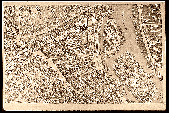Paris
Significance within the Decameron:
Stories:
Panfilo: First Day, First Tale (The rascally Ser Cepparello lives a life of debauchery and is later made a saint)
Neifile: First Day, Second Tale (The Jew Abraham sees the corruption in the Roman Catholic Church and is converted)
Elissa: Second Day, Eighth Tale (The Count of Antwerp, accused of trying to rape the Queen of France, is forced to flee the country)
Filomena: Second Day, Ninth Tale (Ambrogiuolo leads Bernabò to believe his wife has been unfaithful to him)
Neifile: Fourth Day, Eighth Tale (Girolamo is pressed to leave his love and go to Paris, and upon his return he finds her married to another man)
Filomena: Seventh Day, Seventh Tale (Madonna Beatrice takes Lodovico as a lover, and her husband receives a beating)
Pampinea: Eighth Day, Seventh Tale (A scholar, made a fool by a widow, pays her back in full)
Major Characters:
Ser Cepparello
Pertinent data:
Contemporary Issues: International commerce with headquarters located in Florence had branches scattered all over Western Europe and the Mediterranean area. One of the main branches was located in Paris.
Major Locations:
- Notre Dame: The Notre Dame cathedral, begun in 1163 and completed in the 14th century, is the spiritual center of Paris.
- The Bastille: The famous fortress called the Bastille was built in the 14th century.
- Saint-Germain-Des-Prés: The Saint-Germain-Des-Prés is one of the oldest churches in Paris.
- The Louvre: The Louvre was an ancient palace for French kings. It was built during the reign of Charles V.
Images:
Medieval Paris. (88K) The map is from A Literary and Historic Atlas of Europe, by J.G. Bartholomew, 1912. Image courtesy of the The Perry-Castañeda Library Map Collection, The University of Texas at Austin.
Paris and its Environs. (645K) The map is from A Handbook For Visitors To Paris, Second Edition. London: John Murray. 1866. Image courtesy of the The Perry-Castañeda Library Map Collection, The University of Texas at Austin.
A view of Paris in 1721-1750. (198K) The map is courtesy of the Columbia University. To see all the other views of Paris click here.
(J. K., J. Q. & N. F.)


